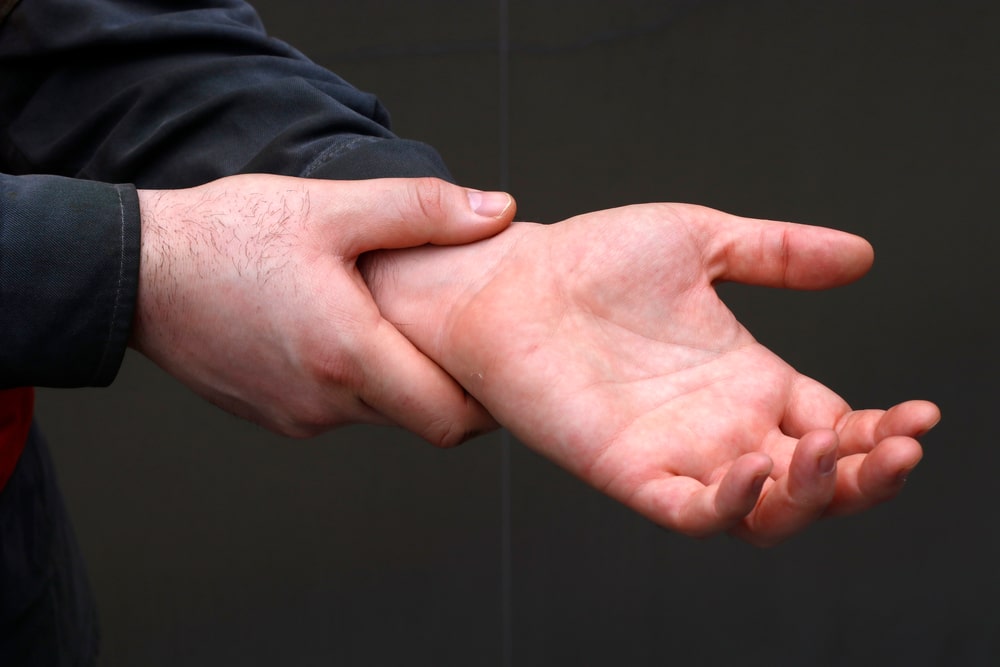The proverbial kingdom was lost for want of a nail, but imagine your good physical health lost for a click. Make that thousands of tiny clicks on your computer mouse at work. Your kingdom lost for poor ergonomic setup. The effects of repetitive motion injuries contribute to painful chronic conditions. They also lead to lost productivity, days off work, and other costly band-aids to pain issues caused by cumulative bodily injuries on the job. Most of us can name someone with arthritis or another work-related chronic battle with pain. Back pain and joint pain are other common issues.
Now imagine a world in which pain caused by repetitive motions or non-ergonomic workstations was met with action to fix the issue. Targeted medicine speeding the body’s recovery is already in use for today’s professional athletes and even some Fortune 500 companies. When the alternative is lost productivity, higher healthcare costs, worker’s compensation cases, and other expensive attempts to fix injuries, prevention is clearly a preferred alternative.
Some deceptively simple interventions include functionally optimized massage. This brief treatment is evidence-based and hands-on. It also has the potential to help workers across every job description. But first, let’s define what we’re up against. The issues an educated employer can help relate to what the professionals call cumulative trauma disorders and musculoskeletal disorders. We’ll break those terms down below.
What is cumulative trauma disorder?
No, cumulative trauma disorder is not what happens after you spend a holiday with your family. Cumulative trauma disorder is an injury caused by repetitive actions of the body. These types of injuries are nothing new. Gone are the days when “scrivener’s palsy” or “telegrapher’s cramp” were common repetitive stress injuries, but today’s times have repetitive stress injuries all the same. That might be an action as small as a tiny finger click on a computer mouse or one as large as loading boxes in a truck by factory workers. Awkward postures can contribute. So can vibrations in cold temperature conditions or a lack of proper recovery time, according to a fact sheet from the Connecticut Department of Public Health.
What are MSDs?
When we use the abbreviation MSD, we are referring to musculoskeletal disorders. According to the Centers for Disease Control and Prevention, MSDs “are injuries or disorders of the muscles, nerves, tendons, joints, cartilage, and spinal discs.” It’s important to remember that not all musculoskeletal disorders are work-related. Because the CDC is concerned with work-related MSD, they explain that they exclude any injuries related to “slips, trips, falls, or similar incidents.” Essentially, while nobody goes about their day with the intention of creating a musculoskeletal disorder, MSDs are not accidents in the same way that a slip, trip, or fall would be an accident. The CDC points out that work-related MSDs are caused by repetitive motion and are cumulative, not the result of a sudden accident. Further, they specify that some of the most common work-related MSDs include carpal tunnel syndrome, arthritis, and back injury and pain.
MSD vs Cumulative Trauma Disorder
Cumulative trauma disorder is a kind of musculoskeletal disorder, but because it is concerned with repetition, not all musculoskeletal disorders are cumulative trauma disorders. Some musculoskeletal disorders can be the result of a sudden accident. However, once you tack on the key phrase “workplace” to musculoskeletal disorder, you are now talking about something that is even more closely tied to cumulative trauma disorders. This is because most people understand workplace MSD to mean the type of problems people develop in their bodies through repetitive movements.
While many see young bodies as resilient to any type of injury, it is not true that only older employees will present with a cumulative trauma disorder. The type of stress that causes cumulative trauma disorders can affect anyone at any age, and a younger workforce is no guarantee of avoiding this injury. A young employee may even be more likely to develop an issue if they are not as educated on prevention.
Link Between Cumulative Trauma Disorder and MSDs
The link between cumulative trauma disorder and MSDs is very close, but that doesn’t mean that these injuries can’t be prevented. Indeed, proactive attention to every employee’s work conditions can pay off in everyone’s ability to do their job well, whether those people are healthcare professionals, laborers, administrative staff, computer professionals, mail handlers, or anyone else.
честные казино с быстрыми выплатами
бездепозитные бонусы казино
играть в лучшем казино на деньги
база казино с бездепозитным бонусом
онлайн казино России
casino oyunu
Ergonomic hazards can be controlled. In fact, they’re so important to workplace health that the CDC mentions three tiers to address them, including what they call engineering controls, administrative controls, and the use of personal protective equipment (PPE). Appropriate attention to creating a safe working environment for the bodies people who work in them must use can mean the difference between a kingdom and a nail. Or, say, the difference between a massage and no massage.
Our ergonomic solutions include essential elements to improve the safety, efficiency, comfort, and productivity of your team. We take detailed risk profiles based on each type of work, the environment it is performed in, and all equipment used. Thus, we make sure we provide you with a breakdown of intervention costs that are predictable. We engage your employees to get valuable feedback, then we set clear goalposts and objectives for outcomes we’d like to see. We provide management support in implementing solutions and we will come back to see how progress is going too.
